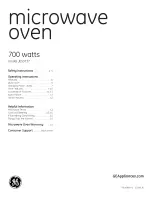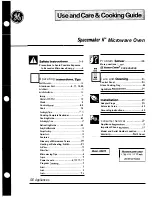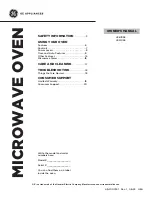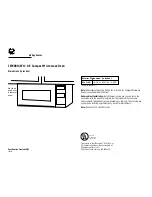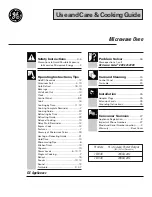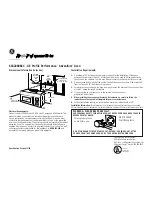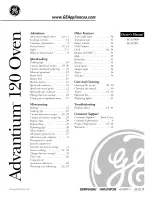
57
Baking tips
Use baking tins made of silicone, glass,
plastic or ceramic materials.
The baking tin must be heat-resistant up to 250 °C. Cakes in these
baking tins will be less brown. When using the microwave, the coo-
king time will be shorter than the time shown in the table.
How to establish whether sponge cake is
baked through.
Approximately 10 minutes before the end of the baking time specified
in the recipe, poke the cake with a cocktail stick at its highest point. If
the cocktail stick comes out clean, the cake is ready.
The cake collapses.
Use less liquid next time or set the oven temperature 10 degrees
lower and extend the baking time. Observe the specified mixing times
in the recipe.
The cake has risen in the middle but is lower
around the edge.
Only grease the base of the springform cake tin. After baking, loosen
the cake carefully with a knife.
The cake is too dark.
Select a lower temperature and bake the cake for a little longer.
The cake is too dry.
When it is done, make small holes in the cake using a toothpick. Then
drizzle fruit juice or an alcoholic beverage over it. Next time, select a
temperature 10 degrees higher and reduce the baking time.
The bread or cake (e.g. cheesecake) looks
good, but is soggy on the inside (sticky,
streaked with water).
Use slightly less fluid next time and bake for slightly longer at a lower
temperature. When baking cakes with a moist topping, bake the base
first, cover with almonds or bread crumbs and then add the topping.
Please follow the recipe and follow the baking times.
The cake cannot be turned out of the dish
when it is turned upside down.
After baking, allow the cake to cool for a further 5 to 10 minutes, then
it will be easier to turn out of the tin. If it still sticks, carefully loosen
the cake around the edges using a knife. Turn the cake tin upside
down again and cover it several times with a cold, wet cloth. Next
time, grease the tin well and sprinkle some bread crumbs into it.
You have measured the temperature of the
oven using your own meat thermometer and
found there is a discrepancy.
The oven temperature is measured by the manufacturer after a
specified period of time using a test rack in the centre of the cooking
compartment. Ovenware and accessories affect the temperature
measurement, so there will always be some discrepancy when you
measure the temperature yourself
Sparks are generated between the tin and
the wire rack.
Check that the tin is clean on the outside. Change the position of the
tin in the cooking compartment. If this does not help, continue baking
but without the microwave. The baking time will then be longer.
EN
Roasting and grilling
•
Use a deep roasting dish for roasting meat and
poultry.
•
Check that your ovenware fits in the cooking com
-
partment. It should not be too big.
•
Meat:
Cover approx. two thirds of the ovenware base with
liquid. Add slightly more liquid for pot roasts. Turn
pieces of meat halfway through the cooking time.
When the roast is ready, turn off the oven and allow
it to rest for an additional 10 minutes. This allows
better distribution of the meat juices.
•
Poultry:
Turn the pieces of meat after Z of the cooking time
has elapsed.
•
As far as possible, the pieces of food you are grilling
should be of equal thickness. Steaks should be at
least 2 to 3 cm thick. This will allow them to brown
evenly and remain succulent and juicy. Do not add
salt to steaks until they have been grilled.
•
Use tongs to turn the pieces of food you are grilling.
If you pierce the meat with a fork, the juices will run
out and it will become dry.
•
The grill element switches off and on again automati-
cally. This is normal. The grill setting determines how
frequently this will happen.
Tips for roasting
Tips for grilling
Summary of Contents for EBM4502S
Page 31: ...DE...



















